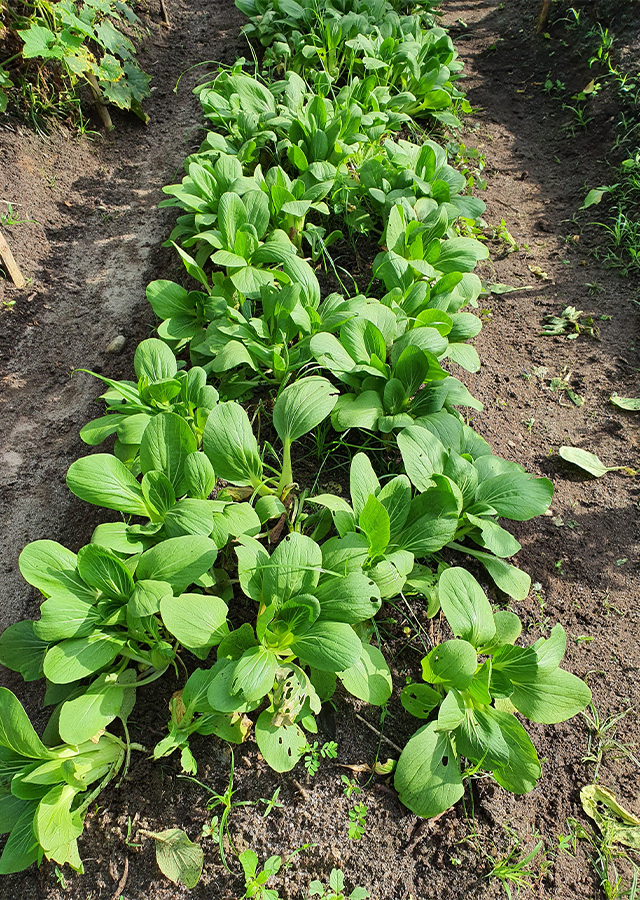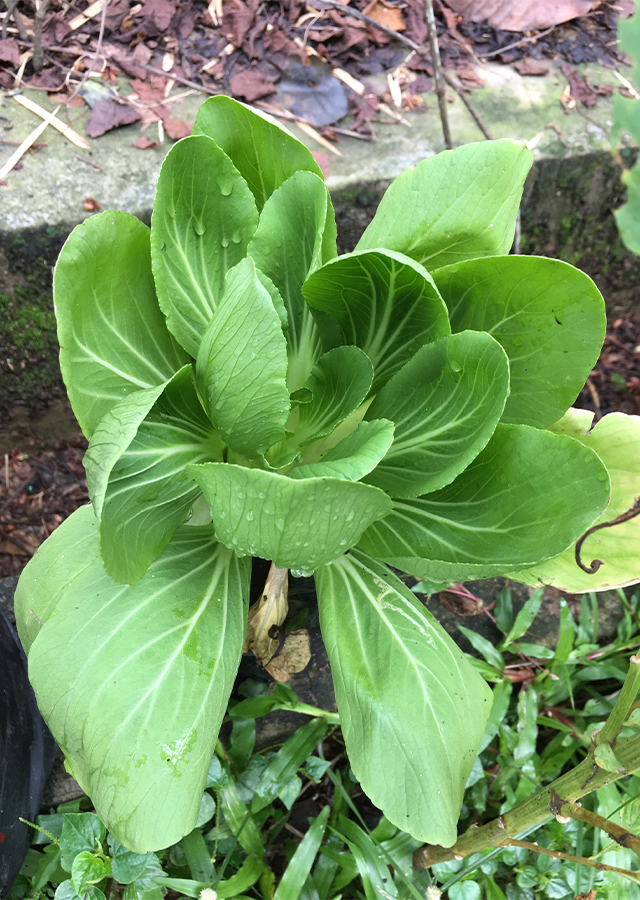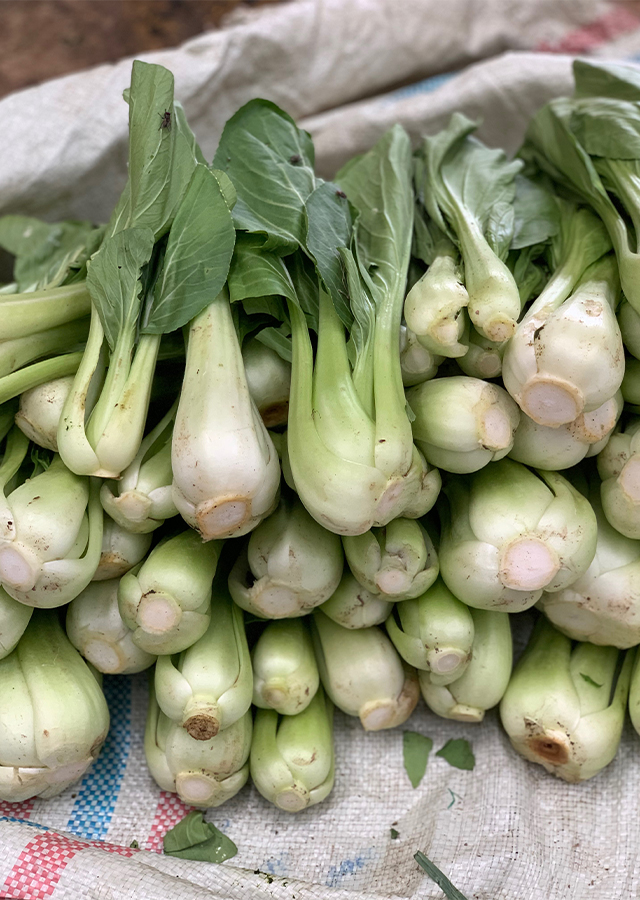Pak Choy
Brassica rapa L.
Brassicaceae
Location in our garden
Vegetable



Synonym
Brassica rapa subsp. chinensis (L.) Hanelt
Barbarea derchiensis S.S.Ying
Brassica arvensis Hablitz
Habitus
Herbaceous. An erect, biennial herb, growing about 15 to 30 cm tall in vegetative state
Part Used
Leaves
Stem
Growing Requirements
Full Sunshine
Need Shade
Drought Resistant
Habitat
Riverbanks
Forest
Grassland
Overview
Pak choy evolved in China, where it been cultivated since the 5th century AD. Being winter-hardy, they are increasingly grown in Northern Europe. The oil contained in the seed of some varieties of this species can be rich in erucic acid which is toxic. However, modern cultivars have been selected which are almost free of erucic acid.
Vernacular Names
Bai cai (Chinese), Chinese kool (Dutch), Chou Chinois (French), Chinakohl (German), Cavolo Cinese (Italian), Taisi (Japanese), Col de China (Spanish).
Agroecology
This plant grows best in areas where annual daytime temperatures 20-25 °C. Plants will withstand light frosts. It prefers a mean annual rainfall in the range 900-1,400 mm. Succeeds in full sun in a well-drained fertile preferably alkaline soil. Prefers a pH in the range 5.5-7, tolerating 4.3 to 7.5. The plant is shallow rooted and intolerant of drought, it needs to be grown in a moist fertile soil for the best quality leaves.
Morphology
- Leaves - green blades with lighter bulbous bottoms. Petioles is enlarged, growing upright forming a subcylindrical bundle.
- Inflorescence - a raceme with pale yellow flowers.
- Seeds - 1 mm in diameter, reddish to blackish brown in colour.
Cultivation
Generative propagation is by seeds. It is advisable to wait for at least one week after seed drying before sowing. The seeds require 3–5 days to germinate under optimum soil moisture and temperature (20–25 ºC). Germination is not influenced by light.
Chemical Constituents
Phenolic compounds, carotenoids, quercetin, glucosinolate, ascorbic acid, isorhamnetin, kaempferol, β-sitosterol, chlorophyll, phytyl fatty acid esters, monogalactosyl diacylglycerol, lutein.
Traditional Medicinal Uses
- Studies have suggested anti-tumor, immunomodulating, antioxidant, phytoremediating properties.
- The leaf is antiarthritic, antiscorbutic and resolvent.
- Used in the treatment of anemia and kidney stones.
- Used as an antimicrobial agent.
